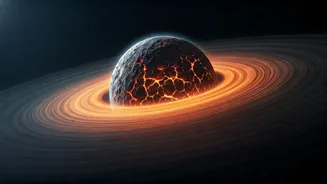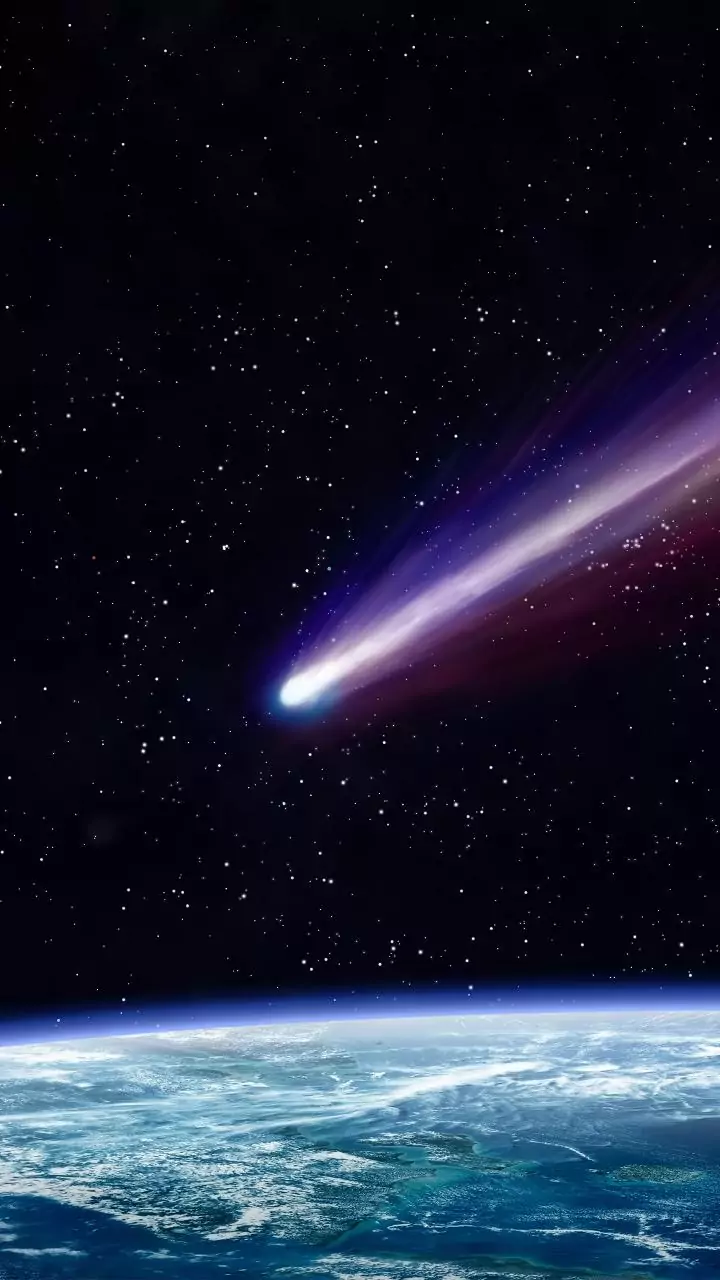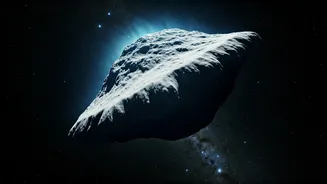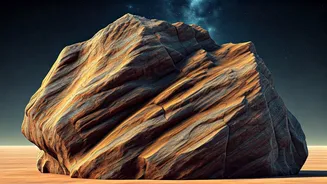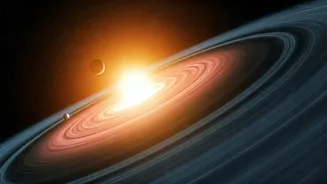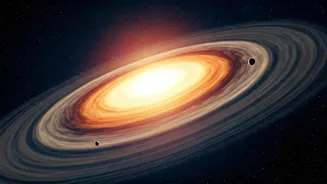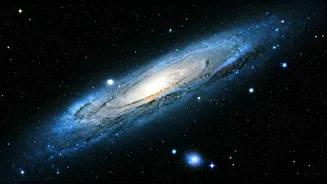Formation Under Pressure
The genesis of solid surfaces is a fundamental aspect of planet formation. When dust particles in a protoplanetary disk collide and stick together, they
start to form larger objects. Gravity takes over as these objects gain mass, pulling in more material and building up into planetesimals. These building blocks then collide and merge, ultimately creating planets. The conditions within the protoplanetary disk, including pressure and temperature, dictate the type of solids that can form. Closer to the star, where temperatures are high, rocky materials like silicates and metals can condense and form solids. Further out, where it's colder, volatile compounds like water ice can also solidify. The precise characteristics of these solids significantly affect the composition and structure of the planets that eventually form, influencing their size, density, and atmospheric conditions, thus highlighting the critical role of pressure in this process. Moreover, the study of solid surface formation also helps astronomers understand the composition of exoplanets and their potential for habitability.
Mini-Neptune Worlds Insights
Mini-Neptune worlds, planets slightly larger than Earth but smaller than Neptune, present a puzzle to astronomers. According to previous theories, these planets should have either rocky surfaces or large, hydrogen-rich atmospheres, very similar to Neptune. However, observations from telescopes like the James Webb Space Telescope, have challenged the original theories. It has been noticed that the mini-Neptunes possess surprisingly extended atmospheres with a significant amount of hydrogen and helium. The intense pressure, as these planets form, plays a crucial role in shaping their atmospheres. The solid core, even if composed of lighter materials, gets compressed under extreme pressures, influencing the atmospheric density and composition. The James Webb Space Telescope's ability to analyze the atmospheres of these planets at different wavelengths has provided unique insights into these atmospheres. Understanding the atmospheres of mini-Neptunes may also shed light on the conditions that allow the formation of oceans and, possibly, the development of life, as the interplay between the solid surface and the atmosphere is a critical factor in determining a planet's habitability.
Disks and Baby Planets
Astronomers are actively looking for signs of baby planets within the disks of dust and gas that surround young stars. These protoplanetary disks, rich with the raw materials of planet formation, are where the process begins. The formation of solid surfaces is key in this stage. As dust grains collide and stick together, they progressively grow larger. As these particles gather and clump, they form planetesimals, the precursors to planets. Observations of these disks using advanced telescopes reveal intricate patterns like gaps, rings, and spirals. These structures hint at the presence of planets that are actively forming within the disk. These planets can gravitationally interact with the disk material, creating these features. The study of these disks is crucial for understanding how planetary systems evolve. Astronomers use various techniques, including infrared and radio observations, to analyze the composition and distribution of material in the disks. These observations offer insights into the types of solids that are forming, the conditions that support planet formation, and the factors that influence the size, composition, and location of the planets that are created.
Webb Telescope's Role
The James Webb Space Telescope (JWST) has revolutionized the study of planet formation. Its advanced instruments can detect the faint infrared light emitted by the dust and gas in protoplanetary disks. With this, the JWST provides unprecedented detail about the processes that are occurring within these disks. The telescope's ability to observe in the infrared allows astronomers to study the composition of the dust grains and ices that are present. The JWST can identify the molecules present in the disks and determine the conditions in which they exist. For mini-Neptunes, the telescope has been instrumental in characterizing their atmospheres. By analyzing the light that passes through the atmospheres of these planets, scientists can determine the composition of gases present. These observations, combined with data from other telescopes and models, allow astronomers to refine their theories about planet formation and gain insights into the diversity of planets that exist in the galaxy. The discoveries made with the JWST are not only changing scientific understanding but also offering hints about how planetary systems are formed and how planets become habitable.
